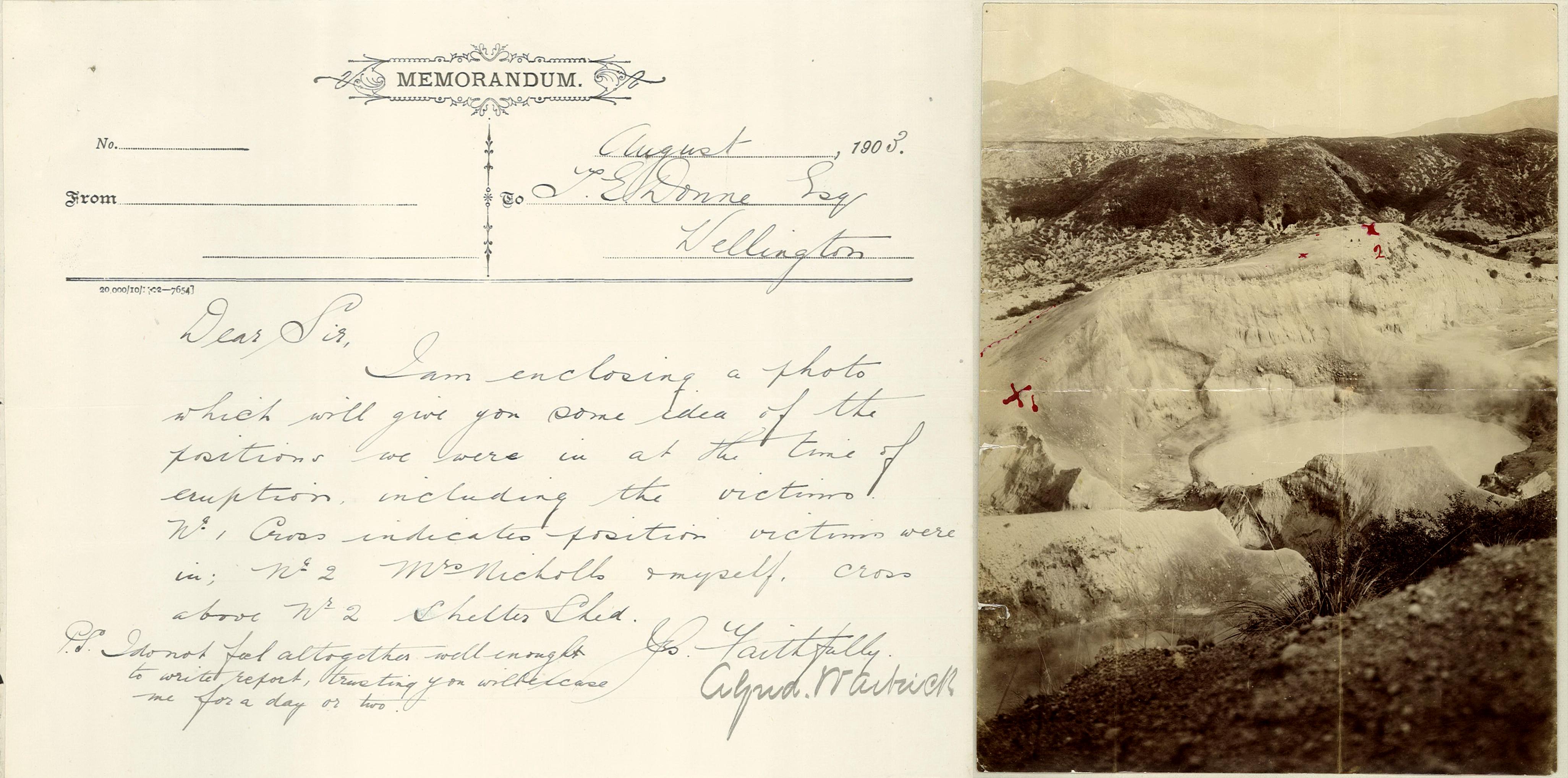For just four years in the early 20th century, New Zealand was host to the largest and most powerful geyser ever seen on the Earth. During its brief life, the dramatic spectacle of the Waimangu geyser attracted tourists from all over, bringing people back to an area that had only recently been marred by tragedy.
In June 1886, the catastrophic volcanic eruption of Mount Tarawera laid waste to what was, at the time, considered the “Eighth Wonder of the World.” The Pink and White Terraces of Lake Rotomahana on the North Island of New Zealand brought tourists from far and wide. The long journey by steamer, coach, canoe, and foot did not deter them, and the local Māori people who welcomed the guests became known as the first New Zealand tourist guides. But all that changed on that fateful day in 1886.
The force of the eruption obliterated the Terraces, gouging a geothermal rift into the landscape that is now known as the Waimangu Volcanic Valley – the world’s youngest. Less than 20 years later, the valley began to awaken.
Between 1900 and 1904, the Waimangu Geyser erupted on a roughly 36-hour cycle, sending torrents of sand, mud, and rocks up to 450 meters (1,476 feet) into the sky. The dark, grimy water of the geyser is what gave the area its name: “Waimangu” translates to “black water”.
To bring some context to the colossal scale of Waimangu, the current largest active geyser on Earth is the Steamboat Geyser in Yellowstone. It has been known to reach heights of over 91 meters (300 feet) – impressive, yes, but dwarfed by comparison with Waimangu in its heyday.
Keen though many were to behold this geological spectacle, the geyser would tragically remind the world of its potential for destruction in August 1903, when four visitors died while on a tour of the area. This official document from the time includes a photo illustrating where the tourists were standing at the time (mark 1).
Alfred Warbrick, the Chief Government Guide leading the expedition, was standing at mark 2 on the photo. It was reported that he had warned the group not to get too close to the edge of the geyser, but they ignored him. Warbrick’s brother, a New Zealand rugby international, was among the deceased.
By 1904, the activity of the geyser had become less predictable. In November of that year, as suddenly as it had begun, the Waimangu Geyser erupted for the last time.
The spectacle of the geyser was perhaps best captured by the wife of scientist Dr Humphrey Haines, who was with her husband in 1900 on a camping trip when they became the first people to see the geyser erupt. In 1901, Mrs Haines wrote:
“A vast column of black water was projected upwards, rising in an apparently solid body … Then for a moment it seemed to pause, but in another instant its apex burst outwards and a torrent of inky water streaked downwards to meet and lose itself in the snowy billows which rolled majestically upwards.”
With its location in the Pacific Ring of Fire, the area around the Waimangu Valley bears all the signs of a history shaped by volcanic activity. It’s the site of the world’s largest hot spring, the 200-meter (656-foot) Frying Pan Lake.
The roiling waters of Frying Pan Lake, the world’s largest hot spring. Image credit: Linda_K/Shutterstock.com
Whether the world will ever see a larger geyser, here or elsewhere, only time will tell; but up to now, there has never been a greater geothermal spectacle than the Waimangu Geyser at play.
Source Link: The World’s Largest Extinct Geyser Was 4 Times Bigger Than Yellowstone’s Steamboat
